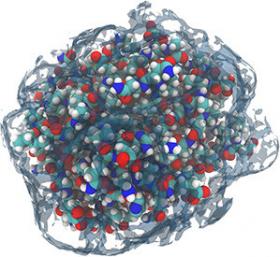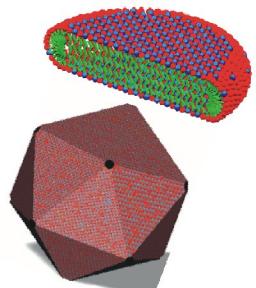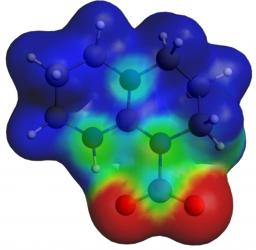From molecules to molecular materials
To get objects with original features, making molecular materials is addressed by assembling building blocks, as atoms, simple or complex molecules or nanostructures (carbon nanotubes, and graphene sheets in particular) on metallic, inorganic or organic supports, glass ... by "bottom-up" processes.


Interfaces, complex fluids and microfluidics
Depending on the field (low-carbon energies, nanoscience for information and health technologies (fundamental research for IT and HIT), radiation-matter interaction), several IRAMIS teams are involved in this topic.
Molecular assembly and nanostructured materials
In many liquid or solid materials of our everyday life matter appears as highly divided. The precise organization of the finely divided components from the microscopic to the macroscopic scale has a huge implication on the properties of these materials. Many of these nanostructured materials are classified as "soft matter".


The development of nanotechnology based nowdays on the assembly (or even self-assembly) of building blocks that are nanoparticles. The goal is to make use of the intrinsic properties of nanoparticles such as their plasmonic capacities, high surface area or reactivity and of their assembly, to obtain new functional devices such as nanofiltration membranes or photonic crystals.
Nanostructured materials and nanocomposites
In very many situations, whether it be in fluids or materials for every day use, or in biological systems, matter is present in a highly dispersed form. It follows an extraordinary range of behaviour due to structural combinations, from the molecular to the mesoscopic and macroscopic scale.


Quantum chemistry and molecular simulations
Theoretical chemistry studies (quantum chemistry, classical and ab initio molecular dynamics simulations) at LCCEF focus on lanthanides and actinides compounds. Domains of application are medical imaging (e.g., MRI) and nuclear sciences. The goal of these theoretical studies is to design new molecular frameworks in liquid state. Some methodological developments are also conducted.
Supramolecular, structural and coordination chemistry
In this domain, the field of study of DRECAM covers the molecule to the controlled assembly of molecules. This approach extends from the fine comprehension of molecule - metal coordination and interaction, to the construction and the synthesis of molecular assemblies having specific properties (structure, complexation, solubility, biological activity) and finally to their characterization by specific tools such as solid or liquid NMR, X-ray or neutron scattering and near field microscopies.










